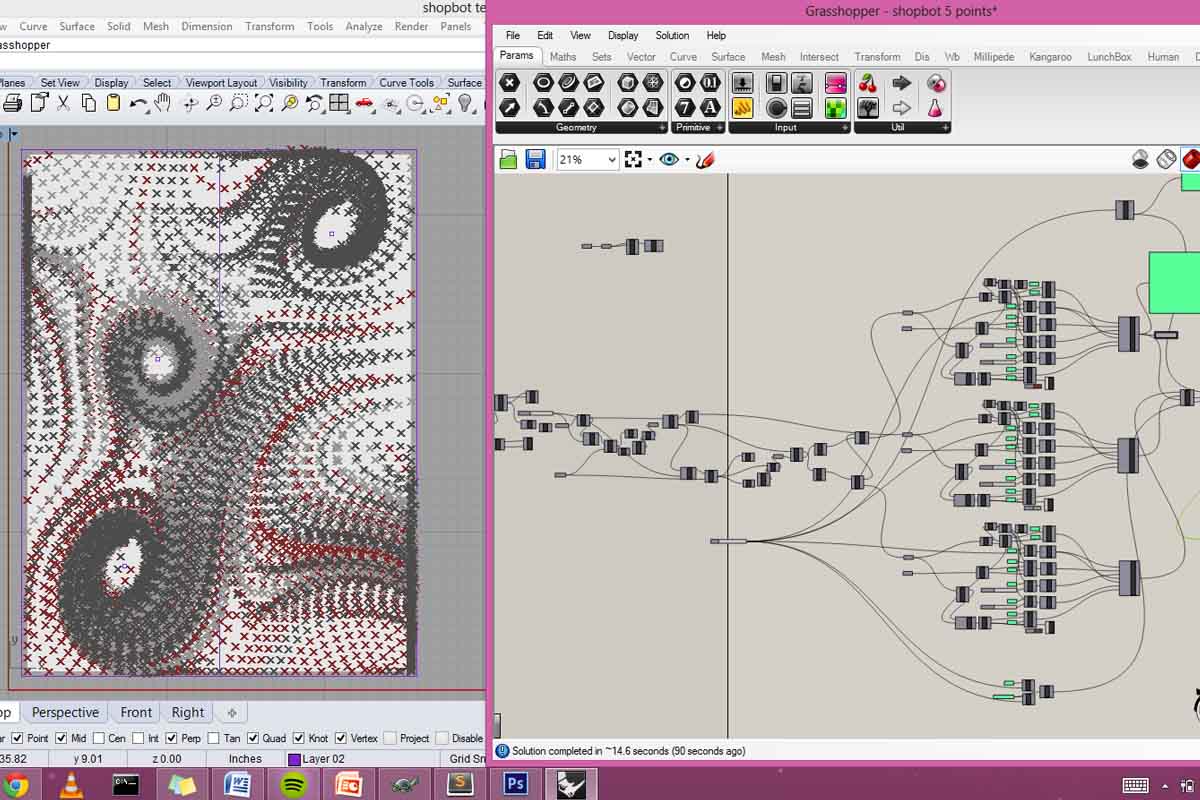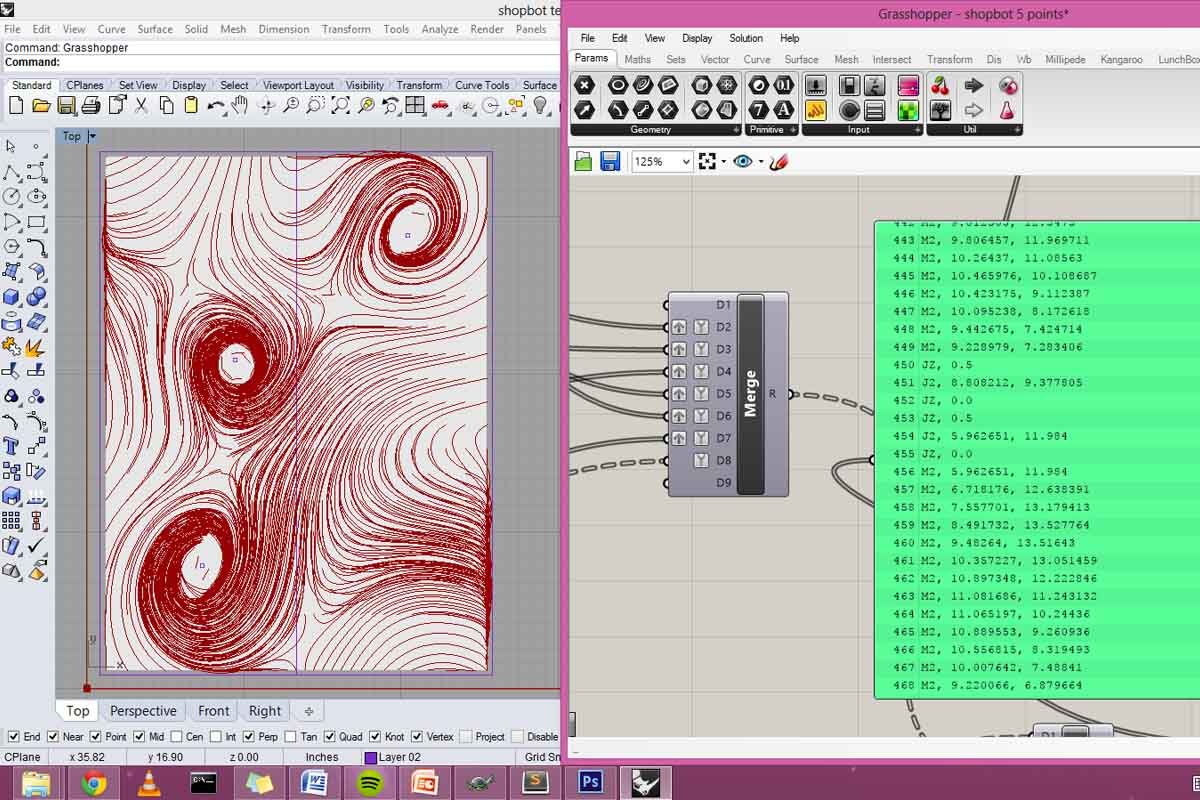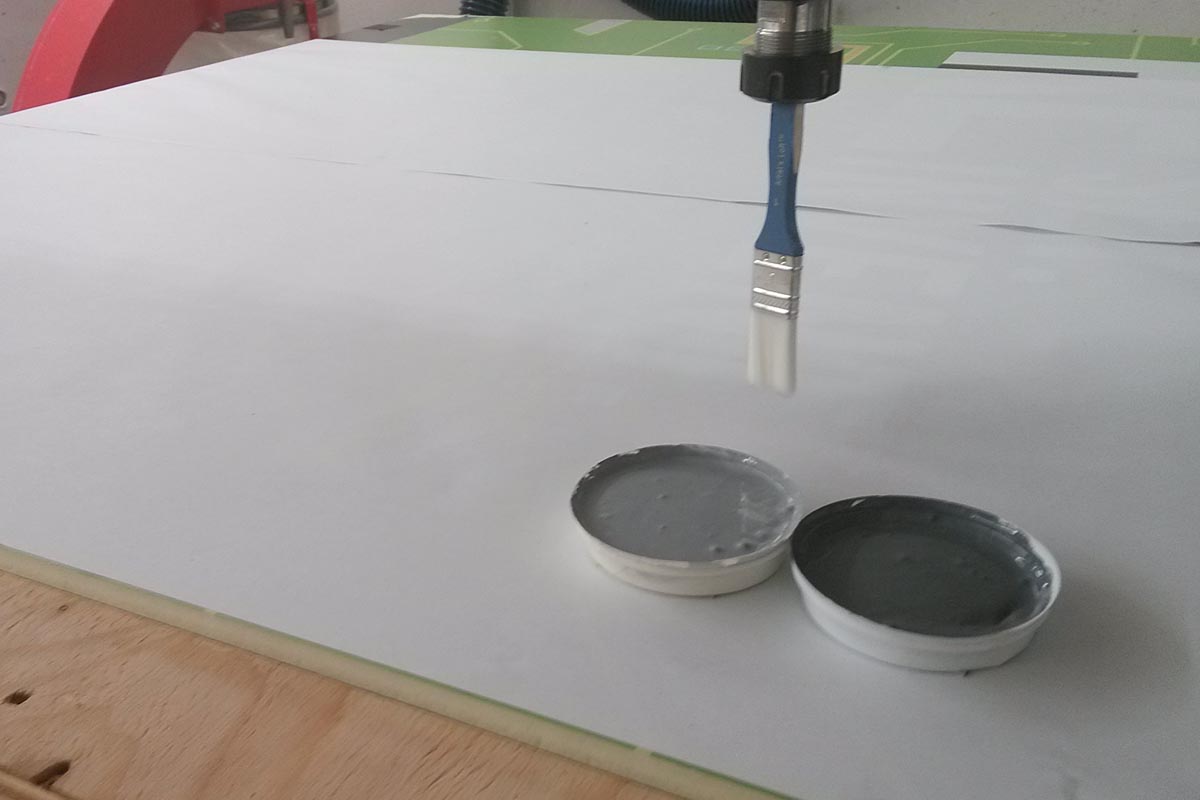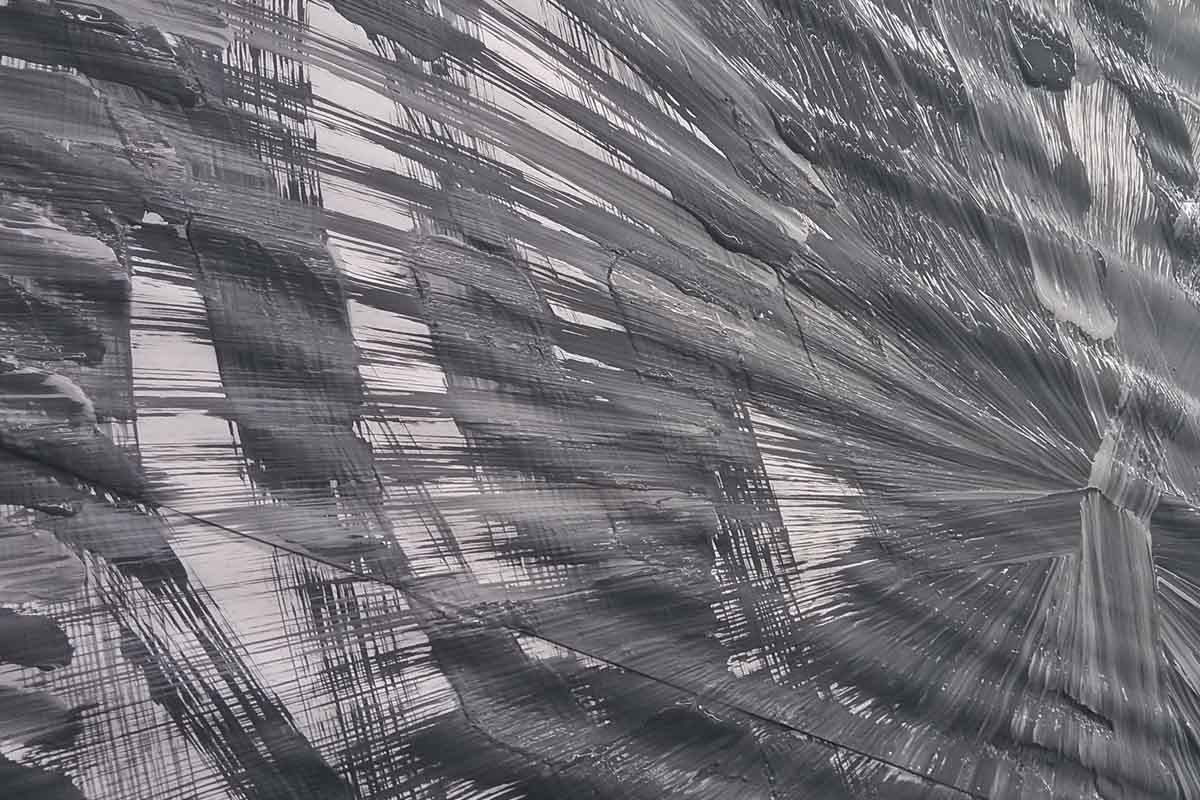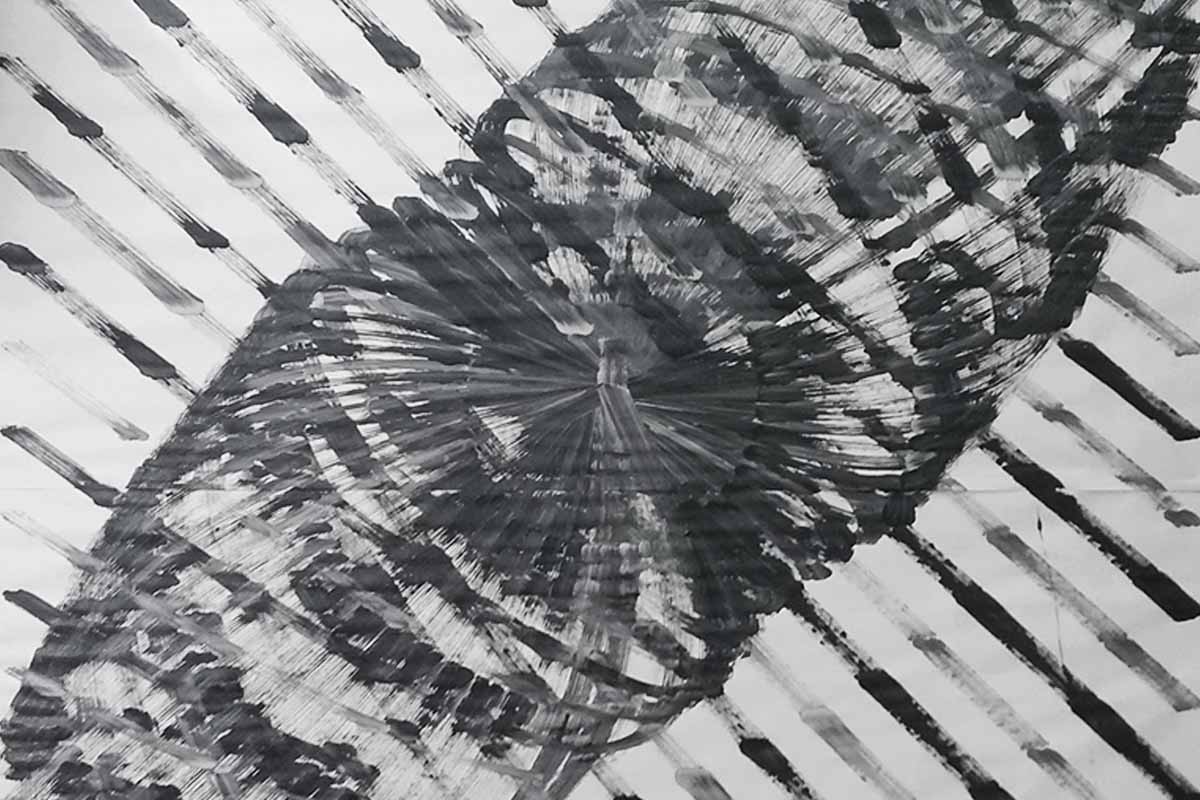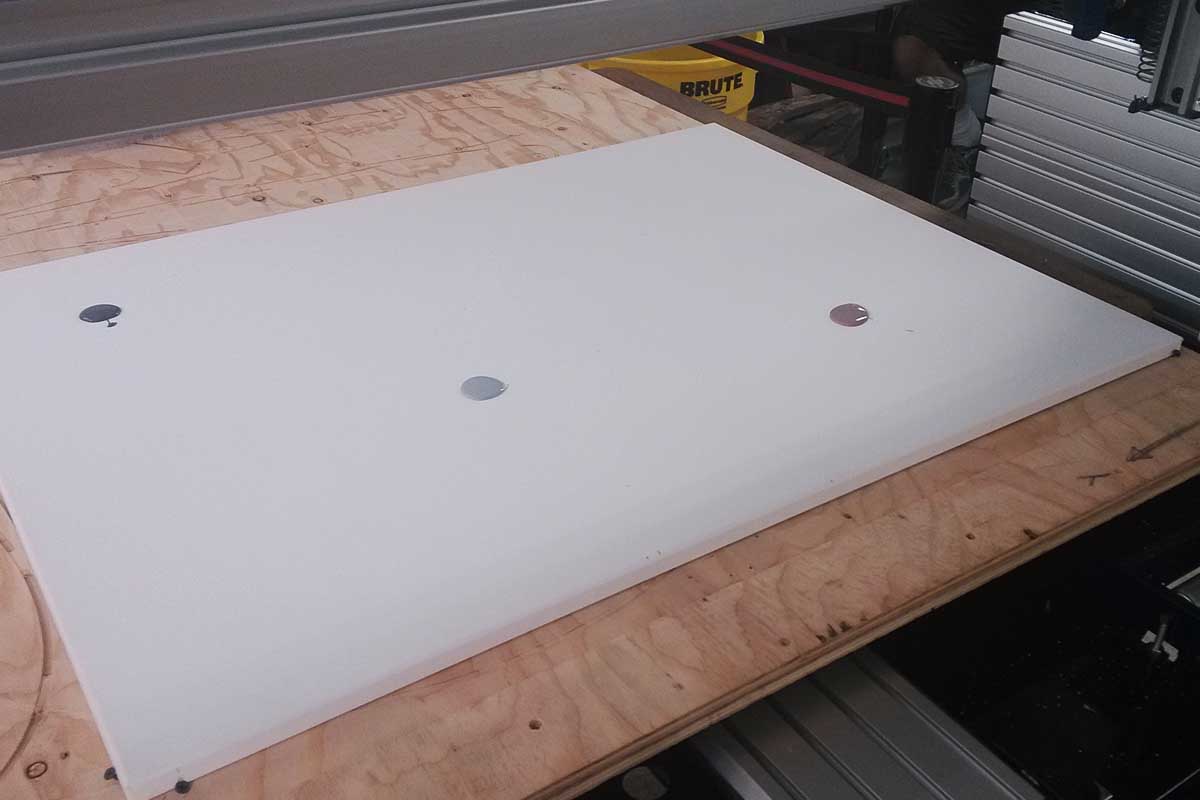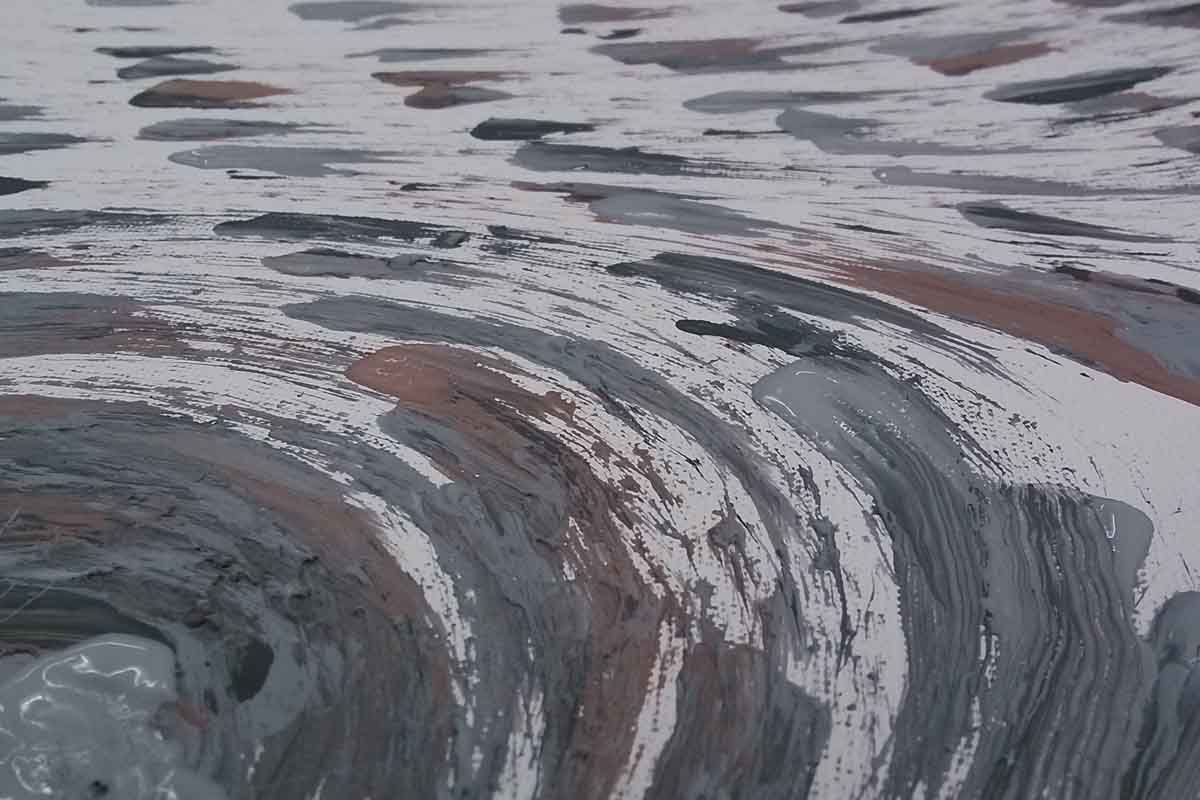Something Big - CNC Painting
I've used CNC milling for machining plywood quite a bit in the past, so I opted to use this week's assignment to put the machine to an alternative use. This is also a step in the direction of my final project proposal. Rather than using the mill to cut material, I replaced the bit with a paint brush. This required a customized toolpath to tell the machine to return to a color swatch off of the canvas and dip the paint brush in fresh paint after each stroke. Due to constraints on the machine time, I was only able to make two studies, neither of which passed my aesthetics test (I'd rather have a blank canvas on my wall), but nevertheless was a useful exercise in a somewhat obscure digital/physical interface. My only real disappointment was that it failed to produce an aesthetic that was unmistakably machined...which was actually the whole point of the exercise.
